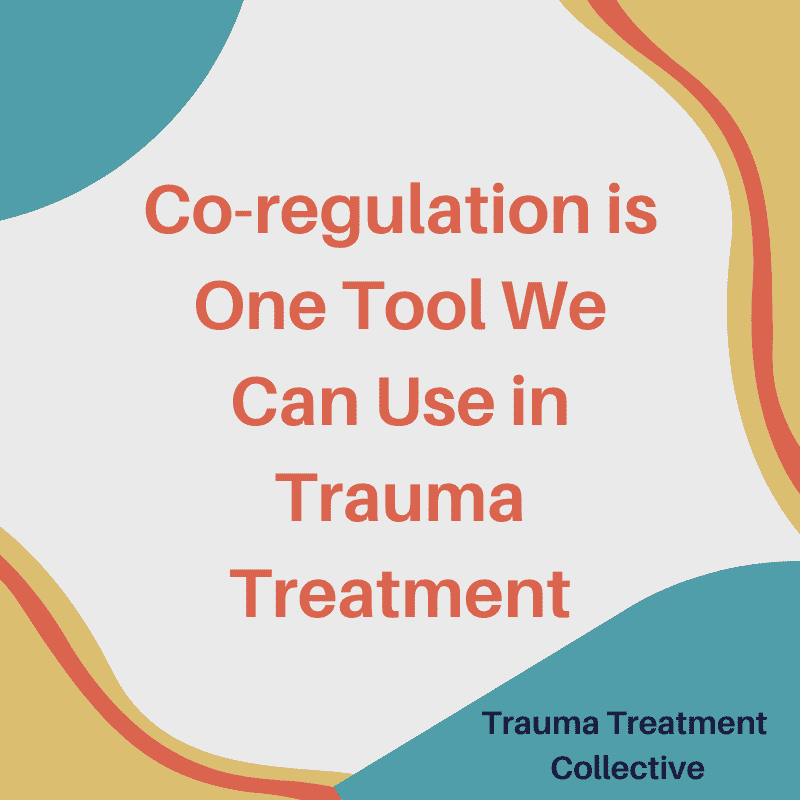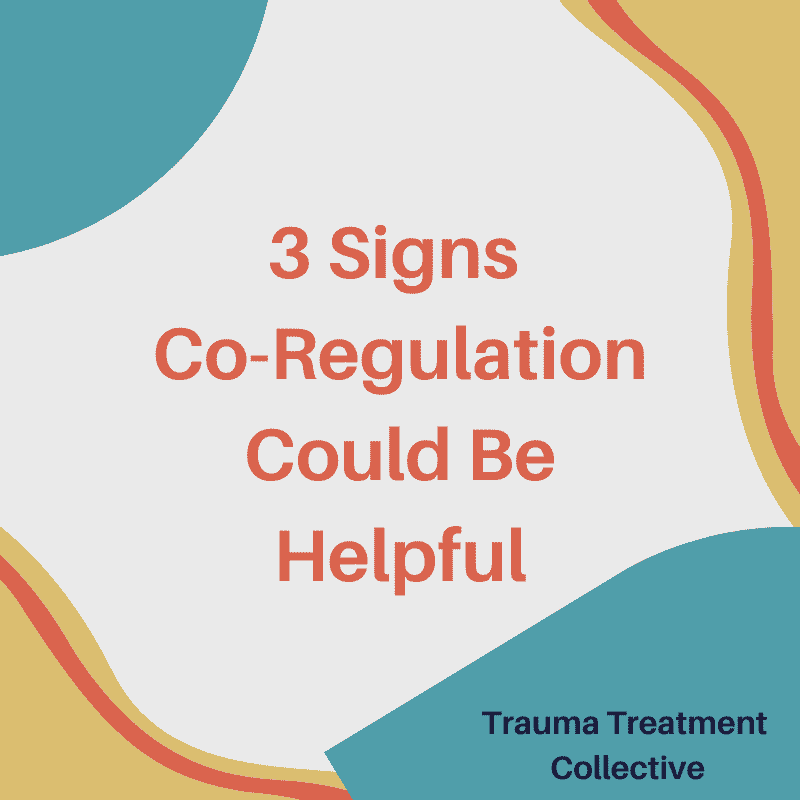
I like to think of co-regulation as one of the many tools we have at our disposal to help move our clients towards their goal of healing. Our ability to share our own regulation with our clients as they learn to self-regulate is a powerful intervention for their healing journey.
The need for co-regulation can be most easily identified in infants as they learn to self-soothe: think of how they settle easily when being taken care of by a regulated, safe, consistent caregiver. I like to think of it as the caregiver lending some regulation to the baby until the baby can manufacture their own. This process gives the baby the visceral memory of what calm, safe, settled feelings feel like in their body. That is a centering place they will become more and more equipped to navigate to on their own in the face of activation.
Over the years, I have come to identify a couple of tell-tale signs that co-regulation could be very helpful to a client. In this blog, we will explore those signs. Then in the next blog, we will talk about how to implement the intervention of co-regulation. Co-regulation is something that most of us do naturally with clients, but as I talk about it this month as an intervention, I want you to keep in mind we are making the covert overt. We are putting more emphasis on things that you are doing naturally and using that skillfully in trauma treatment.
Consider offering co-regulation if your clients exhibit any of the following:

- Moderate to Severe Attachment Challenges
Attachment, in the simplest terms, is referring to how we do relationships with others. There can be some distinct patterns we follow based on our earliest relationship with our caregivers between 0-3 years old. If you want to learn more about attachment challenges in trauma treatment, consider joining the Pro Membership where you can have immediate access to several trainings on attachment styles.
If a client is struggling with attachment challenges, it may look like people-pleasing behaviors; too much concern with doing the treatment “right”; no clear understanding of themselves such as needs, likes, dislikes, and desires; avoidance of connection with you in the healing relationship; overly independent behaviors in the healing relationship; mix between over dependence, anger, and rage towards you.
2. Lack of Trust in the Settled Feeling
Most of our clients have learned to survive in hard situations and, therefore, learn to live in feelings of chaos and overwhelm. I have had clients come to the realization in their healing journey that they don’t trust when things are “okay.” Clients report not knowing what to do when things are okay and feeling immense amounts of fear when they feel settled.
Clients might constantly self-sabotage, seem agitated when thing are okay, create things to worry about that seem far-fetched, or become overly involved in others’ chaotic situations.
3. Client Processing Through Big Pieces of Their Trauma
Trauma processing is hard and intense work for both the client and professional supporting them in the process. When clients are working on “big” pieces of their trauma, you may notice that they need more containment and support in certain places.
In my experience, clients have benefited from co-regulation when they exhibit avoidance behaviors such as missing sessions, unexplained late cancellations, and constantly derailing the focus of sessions. Another indication in the processing phase of treatment that co-regulation might be good is that the client seems stuck in overactivation. They struggle to regulate in session, outside of session, or both; and this has not been a problem in the past. Lastly, the client might also ask for the support and reassurance that they are okay. Clients have directly asked me if the way they feel is normal, or if they are doing okay in the treatment process.
If you are interested in learning more about why phases or a flow in your trauma treatment is important, go here.
These are just a few signs that you can look for in your clients to see if they might benefit from some overt co-regulation interventions. As mentioned earlier, we will talk about ways you can co-regulate with your trauma clients to help them move forward in their healing journey in the next blog entry.

